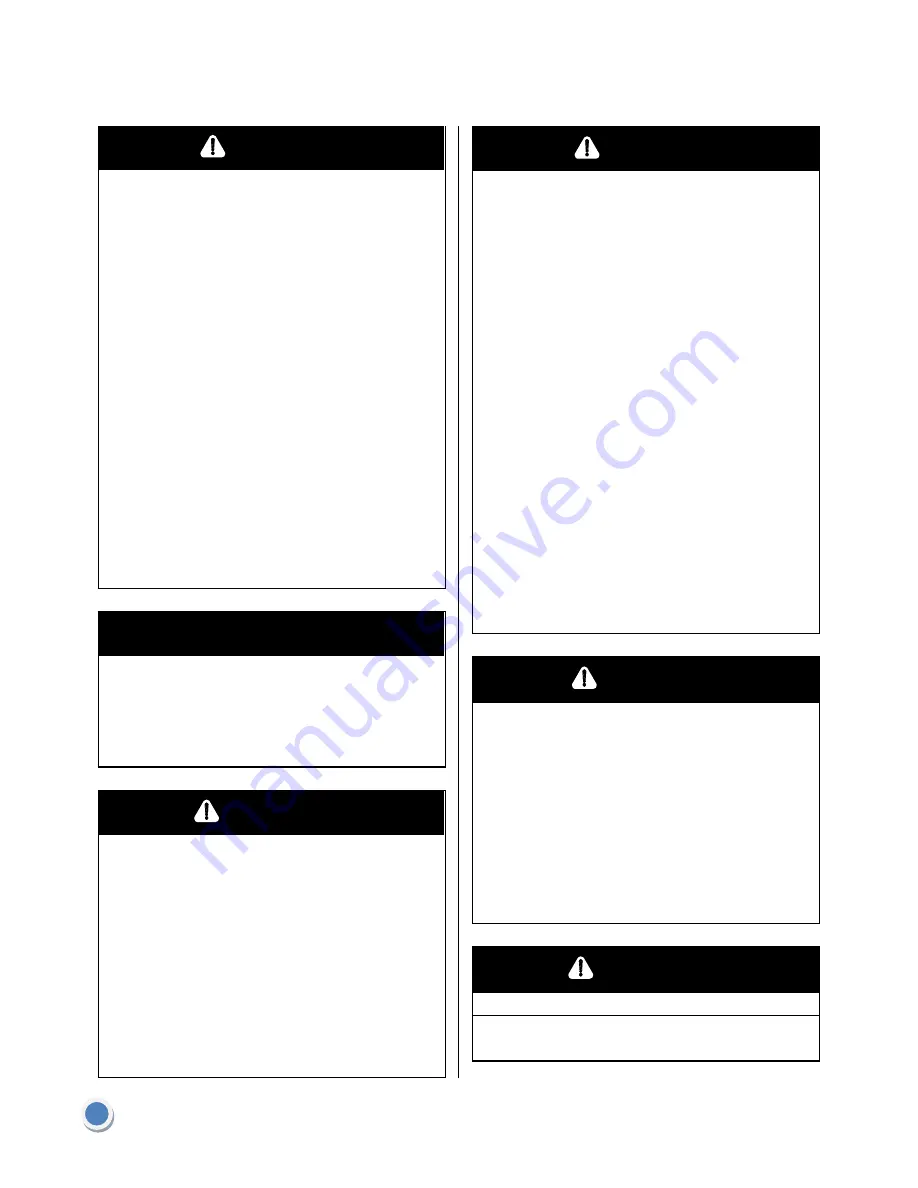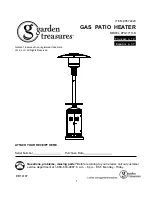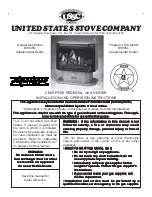
2
DANGER
• EXPLOSION - FIRE HAZARD
• Keep solid combustibles, such as building materials,
paper or cardboard, a safe distance away from the heater
as recommended by the instructions.
• Provide adequate clearances around air openings into
the combustion chamber.
• Never use the heater in spaces which do or may contain
volatile or airborne combustibles, or products such as
gasoline, solvents, paint thinner, dust particles or unknown
chemicals.
• During operation, this product can be a source of
ignition. Keep heater area clear and free from combustible
materials, gasoline, paint thinner, cleaning solvents and
other flammable vapors and liquids. Do not use heater in
areas with high dust content. Minimum heater clearances
from combustible materials: three (3) feet from the sides &
two (2) feet from the top.
FOR YOUR SAFETY
If you smell gas:
1. Shut off gas to the appliance.
2. Extinguish open flame.
3. If odor continues, immediately call your gas
supplier.
WARNING
We cannot foresee every use which may be made of our
heaters.
Check with your local fire safety authority if you have
questions about heater use.
Other standards govern the use of fuel gases and heat
producing products for specific uses. Your local authorities
can advise you about these.
If no local codes exist, follow National Fuel Gas Code,
ANSI Z223.1. In Canada, installation must conform to local
codes. If no local codes exist, follow the current National
standards of CANADA CAN/CGA-B 149.2.
DANGER
• CARBON MONOXIDE HAZARD
• This heater is a combustion appliance. All combustion
appliances produce carbon monoxide (CO) during the
combustion process. This product is designed to produce
extremely minute, non-hazardous amounts of CO if used
and maintained in accordance with all warnings and
instructions. Do not block air flow into or out of the heater.
• Carbon Monoxide (CO) poisoning produces flu-like
symptoms, watery eyes, headaches, dizziness, fatigue and
possibly death. You can't see it and you can't smell it. It's
an invisible killer. If these symptoms are present during
operation of this product get fresh air immediately!
• For outdoor use only .
• Never use inside house, or other unventilated or
enclosed areas.
• This heater consumes air (oxygen). Do not use in
unventilated or enclosed areas to avoid endangering
your life.
CAUTION
• SERVICE SAFETY
• Keep all connections and fittings clean. Make sure
propane cylinder valve outlet is clean.
• Inspect hose before use. Replace if there is evidence of
abrasion or wear.
• During set up, check all connections and fittings for leaks
using soapy water. Never use a flame.
• Use as a heating appliance only. Never alter in any way or
use with any device.
• Check entire hose at least annually.
WARNING
• BURN HAZARD
• Never leave heater unattended when hot or in use.
• Keep out of reach of children.






























